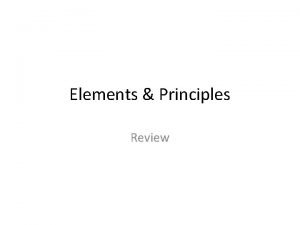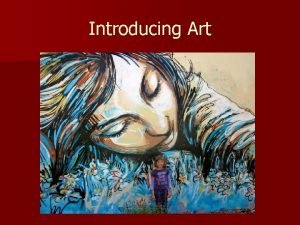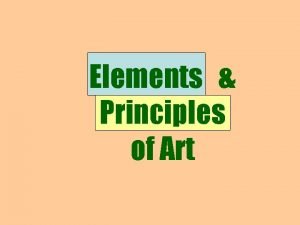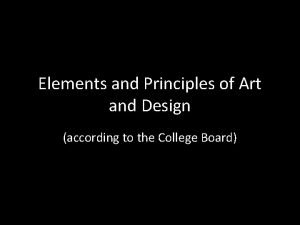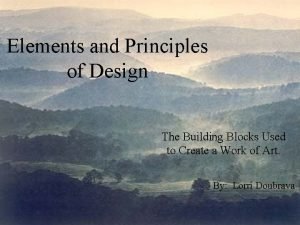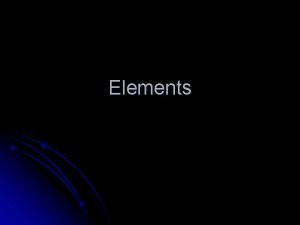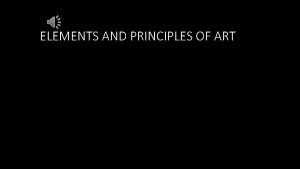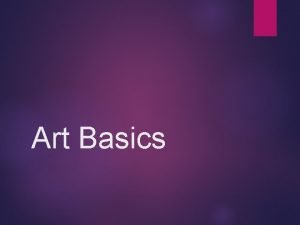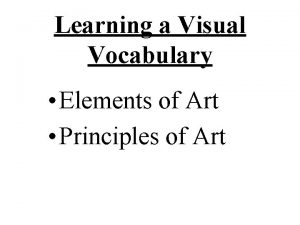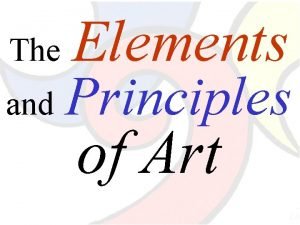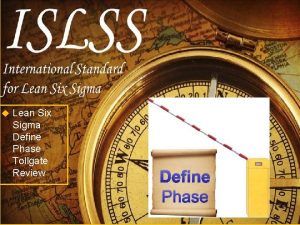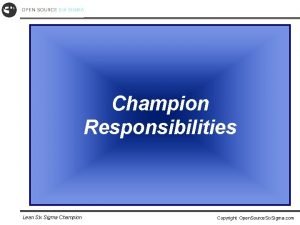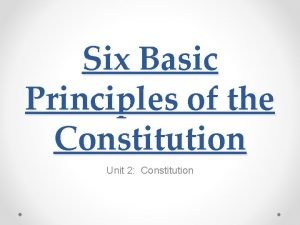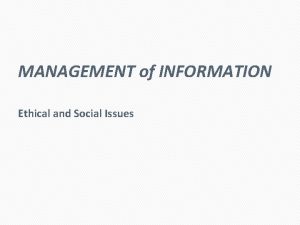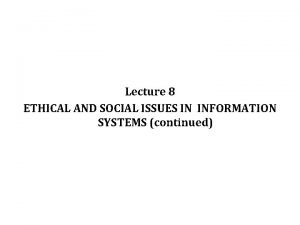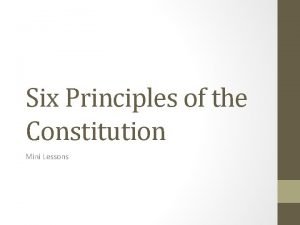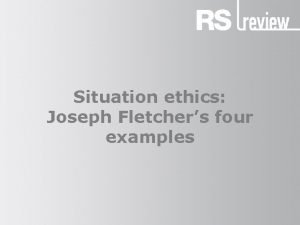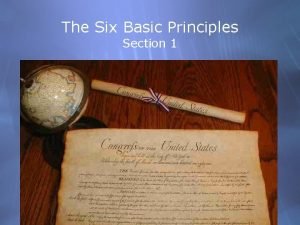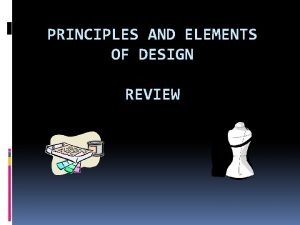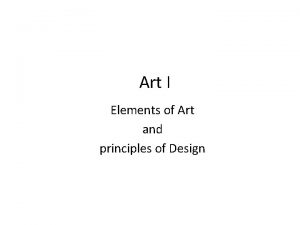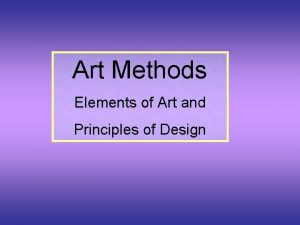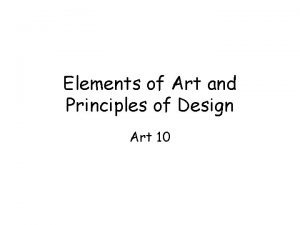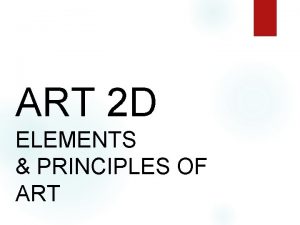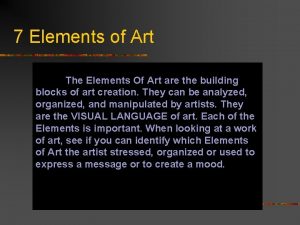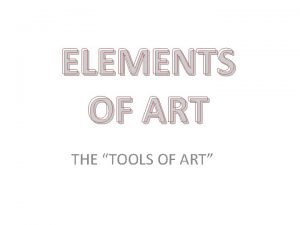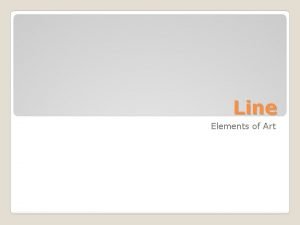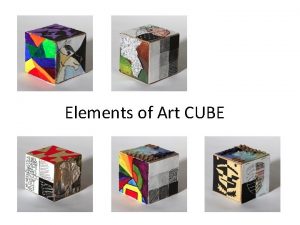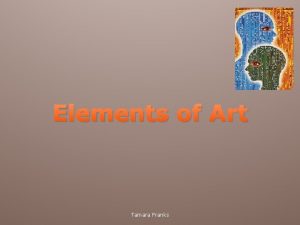Elements Principles Review The Six Elements of Art






















- Slides: 22

Elements & Principles Review

The Six Elements of Art: • • • Line Texture Color Shape Value Space • Little Tame Cats Sit Very Still

Line • In art, a line is a continuous mark made on a surface by moving a point. • Horizontal __ • Vertical I • Diagonal / • Curved ) • Zig-zag ww • Thick __ • Thin __

Texture • Texture is how things feel, or look as though they might feel if touched.

Color • Color is the element of art that is derived from reflected light

Shape • There are two types of shapes: • Geometric & Organic

Value • Value is how light or dark a color is.

Space • There are two kinds of space: Positive & Negative

Principles Of Art • • • Balance Unity Movement Progression/ Proportion Pattern • • • Contrast Overlapping Variety Emphasis Repetition/ Rhythm BUMPP COVER

Balance • • Three types of Balance: 1. Formal/ Symmetrical 2. Informal/ Asymmetrical 3. Radial

Formal Informal

Radial

Unity When elements of a design work together as a whole to create a pleasing image.

Movement • Movement in an image means that the artwork makes your eye move around its composition.

Progression/ Proportion • How the different elements in the artwork relate to each other, and how they relate to the work as a whole.

Pattern • Two-dimensional decorative effect achieved through repeating the arrangement of colors, lines, shapes, and/or textures

Contrast • The use of opposites to make an element or object stand out. (Green is opposite of red).

Overlapping • The principle of arranging elements over another in varying degrees to create depth.

Variety • The use of elements or alteration of a repeated element. • Ex. The picture has a variety of different flowers.

Emphasis • Making an element or object in an artwork stand out.

Repetition/ Rhythm • The repetition of an element to create visual movement.

Lets let Youtube. com explain it to us • https: //www. youtube. com/watch? v=q. IOfboz. T IY 8
 Six elements of art
Six elements of art Types of emphasis in art
Types of emphasis in art Elements principles of art
Elements principles of art Principles of art
Principles of art Elements and principles of art
Elements and principles of art It is the path our eyes follow when we look at work of art
It is the path our eyes follow when we look at work of art Elements of art movement
Elements of art movement Da vinci
Da vinci Theatre
Theatre Arts elements and principles
Arts elements and principles Subject matter
Subject matter Elements and principles of art
Elements and principles of art A polygon with six congruent sides and six congruent angles
A polygon with six congruent sides and six congruent angles Define tollgate
Define tollgate Open source six sigma review
Open source six sigma review Principles of layout
Principles of layout Six principles of the constitution
Six principles of the constitution 6 principles of the constitution
6 principles of the constitution Six ethical principles
Six ethical principles Six ethical principles
Six ethical principles Federalism cartoon explanation
Federalism cartoon explanation Fletcher's four presumptions
Fletcher's four presumptions Section 1 the six basic principles
Section 1 the six basic principles
